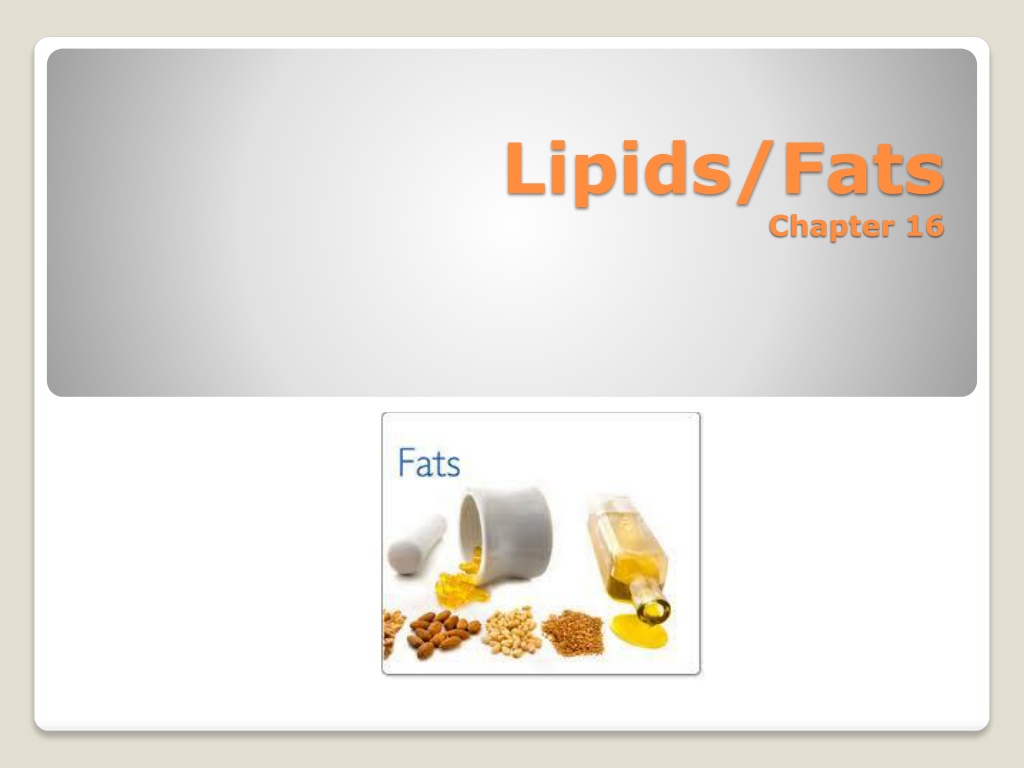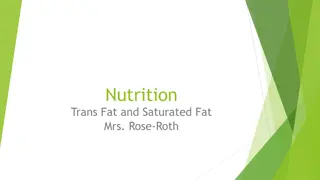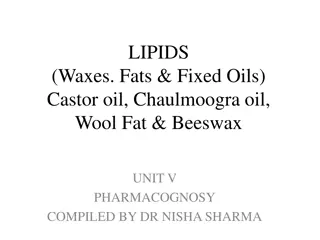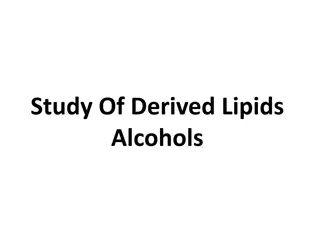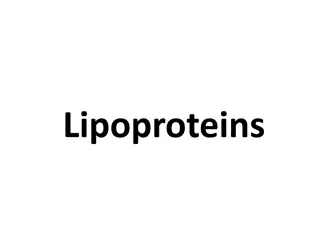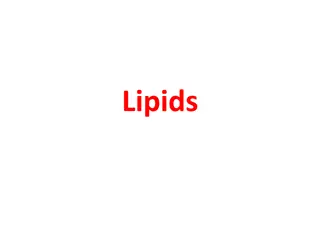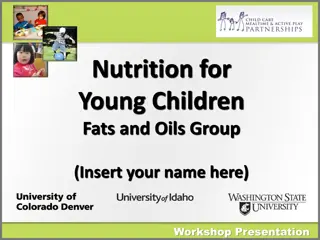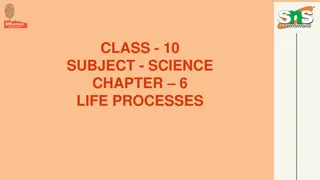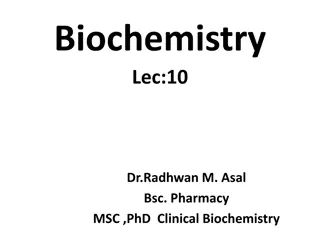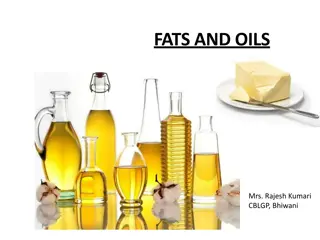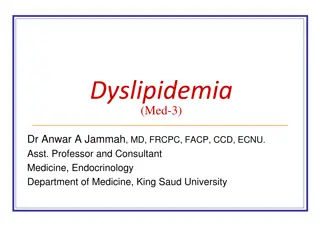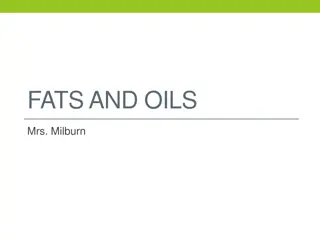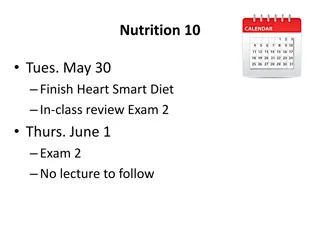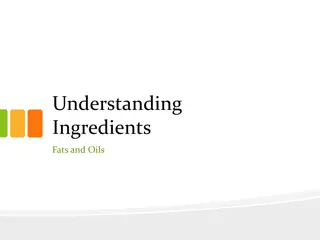Understanding Lipids and Fats in Nutrition
Lipids are essential compounds found in every living cell, categorized into triglycerides, sterols, and phospholipids. Triglycerides play a vital role in absorbing and transporting vitamins, energy storage, and cushioning organs. Understanding the difference between saturated and unsaturated fats is crucial for a balanced diet, with monounsaturated and polyunsaturated fats being healthier choices. Omega-3 fatty acids are beneficial for burning fat. Saturated fats, particularly found in animal products, should be consumed in moderation due to their negative effects on health.
Download Presentation

Please find below an Image/Link to download the presentation.
The content on the website is provided AS IS for your information and personal use only. It may not be sold, licensed, or shared on other websites without obtaining consent from the author. Download presentation by click this link. If you encounter any issues during the download, it is possible that the publisher has removed the file from their server.
E N D
Presentation Transcript
Lipids/Fats Chapter 16
What are Lipids? What are Lipids and Triglycerides? (1:54) http://www.youtube.com/watch?v=JsMDthjr8Lo Lipids are a family of chemical compounds that are a main component in every living cell. They include the following three categories: Triglycerides they include all fats and oils people typically eat. Sterols include bile, certain hormones and the most commonly known sterol cholesterol.
What are Triglycerides? (Part 1 of 2) | HealthiNation (3:23) http://www.youtube.com/watch?v=E-u5j_Us8uI Triglycerides Absorbs vitamins A,D,E,&K and transports them to our organs Keeps skin, hair & nails looking healthy Cushions vital organs and bones Serves as energy for the body when needed Stored in adipose tissue, pockets of fat stored in a thin layer under your skin
Saturated and Unsaturated Fat How to Understand the Difference between Saturated and Unsaturated Fats (2:10) http://www.youtube.com/watch?v=crYNIlcUOiE Coconut Oil: The one saturated fat you should be eating (4:05) http://www.youtube.com/watch?v=S5kKlR5Mqgo Saturated Unsaturated
What Are Unsaturated Fats? (2:11) http://www.youtube.com/watch?v=XjZ60fc IPBg Good Fats Monounsaturated Polyunsaturated Omega 3 fatty acids
Monounsaturated Polyunsaturated Olive oil Canola oil Peanut oil Sunflower oil Sesame oil Avocados Peanut Butter Nuts Soybean oil Corn oil Safflower oil
Omega 3's Help You Burn Fat (3:37) http://www.youtube.com/watch?v=9Tcnn7Yy p6k Omega-3 Fatty Acids Fish albacore tuna, salmon Soybeans Walnuts Flaxseeds
Bad Fats Saturated Trans-fatty acids
Saturated Fat found in animal products and coconut oil Beef Lamb Pork Butter Cheese Cream All Whole milk dairy products
The Truth About Hydrogenated Oils & Trans Fats http://www.youtube.com/watch?v=ymoABAVm3Rc Trans Fat & Hydrogenated Fats Created when processed to extend the shelf life Stick margarine Vegetable shortening Commercially fried foods Packaged baked goods
Understanding Cholesterol (Cholesterol #1) (2:45) http://www.youtube.com/watch?v=wnK1Kv3XkZI What-Is-Cholesterol.mov (2:25) http://www.youtube.com/watch?v=tR4QrtN0r7c Cholesterol A fat-like material that can be good or bad for us depending on what we eat. Two Types HDL Healthy Fats, fats that come from plants LDL Lousy Fats, fats that come from animals
Recommended Daily Amount (RDA) Limit fat intake to 30% of daily caloric intake Only 10% of those fats should be saturated Example: in a day with 2000 calories consumed, only 65 grams of fat should be eaten, with 20 grams or less of saturated fat Will depend on caloric intake each day
Fat Deficiencies Deprived of vital nutrients Nutrient imbalances which can lead to ill health Digestion and absorption of vitamins and nutrients, such as calcium, will be affected
Fat Excess Too Much Fat can lead to: Heart disease/attacks Obesity Diabetes Immune dysfunction Cancer Poor cholesterol
Fat Facts Fat that is solid at room temperature is bad for you. Fat that is liquid at room temperature is good for you.
